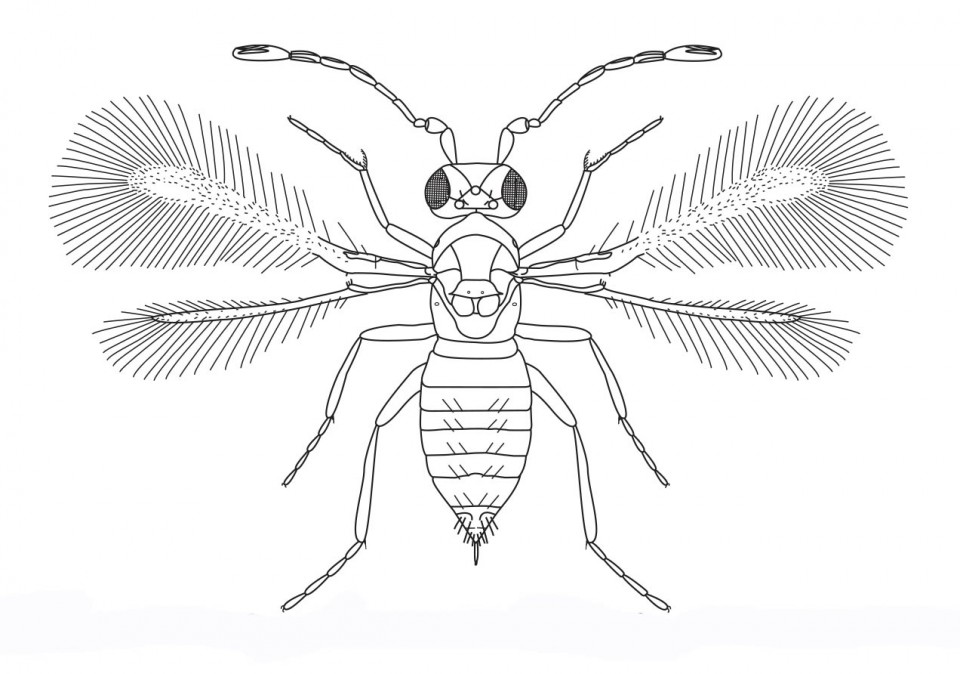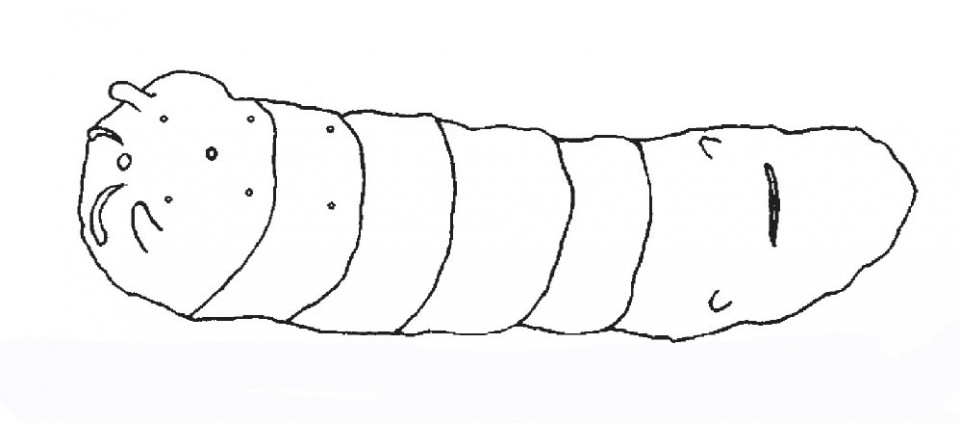Anagrus Fairyflies
Anagrus species (Mymaridae), among the smallest insects known, are endoparasitoids of eggs of Odonata and Hemiptera. The genus is worldwide and about 60 species is now recognized.
Taxonomy and Adult Morphology
The metasoma of Anagrus is not constricted basally, so it appears broadly sessile, the hypochaeta in front of the marginal vein is basal to the first macrochaeta, the tarsi are
The genus is subdivided into three subgenera — Anagrella, Anagrus, and Paranagrus.
Biology
Like all holometabolous insects, Anagrus species have three distinct immature stages, egg, larva and pupa. The egg is stalked, with an ovoid body that swells during embryogenesis. There are two, apodous, larval instars (Fig. 47), which appear completely different from one another. The first instar is sacciform and usually attached to the egg chorion. It does not show any cuticular structure that could serve to feed, breathe or feel. It is completely immobile and probably obtains nourishment and breathes through its cuticle. The second instar is divided weakly into six body segments, has a mouth and a salivary gland opening, two mandibles and an anus, and various other, probably sensory, structures. No spiracle is present. Second instar larvae are very active and fight each other when in the same host egg. The mature larva (prepupa) develops inside the egg into an exarate pupa and does not spin a cocoon. When development is complete, adults are recognizable through the host egg chorion, through which they chew a hole to exit. Aſter emergence the adults shed their waste products (meconium). Males are usually protandrous.
Behavior and Ecology
Reproduction is bisexual or parthenogenetic. The latter reproduction is usually arrhenotokous but, rarely, thelytokous parthenogenesis has been recorded. Females are ready to oviposit as soon as they emerge. Copulation, if it occurs, is usually very quick (some tens of seconds) and inseminated females generally do not copulate again. When fed with sugar water, honey or nectar, adults may live for up to 10 days. It is thought that adult host feeding may occur as in other parasitoids.
Anagrus species mainly parasitize leafhoppers (Cicadellidae), planthoppers, (Delphacidae) and damsel- or dragonfly (Odonata) eggs, all of which are embedded in plant tissue. To reach the eggs, females insert their ovipositor into the slit made by the host or through the plant tissue itself, depending on the species. Adults occur in various habitats, both natural and cultivated, depending on where their hosts occur. This includes dry habitats such as vineyards and beet fields to damp or aquatic ones (ponds) where host eggs are found in plants such as Cyperus or Nuphar.
Certain Anagrus species can develop both as solitary or gregarious parasitoids in eggs of different size, whereas others appear to be much more specialized on eggs of the same size, in which they always develop as solitary parasitoids.
Many Anagrus are extremely important because they provide control of potentially serious pests on many agricultural crops. The most important examples are against leafhoppers such as Empoasca vitis Goethe and Zygina rhamni (Ferrari) in vineyards in Europe and Erythroneura spp. in North America, against leaf- and planthoppers such as Nilaparvata spp. and Sogatella spp. on rice in eastern Asia, and against Perkinsiella sacharicida Kirkaldy on sugarcane in Hawaii.
Some biological supply companies mass produce and sell Anagrus atomus L. for biological control. Care must be taken to ensure the sanitary conditions of the product as the parasitoid is bred on the natural host eggs inserted into plant tissue, which could be a potential vehicle for other pests or diseases.

Figure 46 Adult female of Anagrus sp.

Figure 47 Larva of Anagrus sp.

Amplification


